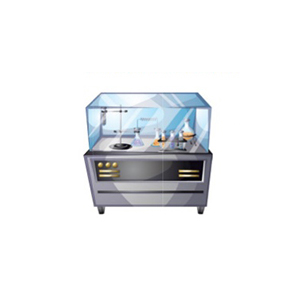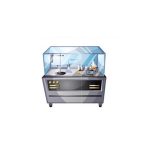–UPDATE April 29, 2020— Yesterday President Trump signed an executive order to keep meat and poultry processing facilities operational during the coronavirus national emergency. U.S. Secretary of Agriculture Sonny Perdue said the following in a USDA statement, “Maintaining the health and safety of these heroic employees in order to ensure that these critical facilities can continue operating is paramount. I also want to thank the companies who are doing their best to keep their workforce safe as well as keeping our food supply sustained. USDA will continue to work with its partners across the federal government to ensure employee safety to maintain this essential industry.”
–END UPDATE–
As critical infrastructure workers, employees at meat and poultry processing facilities have stayed on the job during the coronavirus crisis. Hundreds have fallen ill and many have died as a result; at least 100 USDA inspectors have tested positive for COVID-19 and at least one inspector has died, according to reports. Production facilities across the country have shut down over the past month, and the threat of a meat shortage is very close to becoming a reality, warns Tyson Foods Chairman John Tyson. “In small communities around the country where we employ over 100,000 hard-working men and women, we’re being forced to shutter our doors. This means one thing—the food supply chain is vulnerable. As pork, beef and chicken plants are being forced to close, even for short periods of time, millions of pounds of meat will disappear from the supply chain,” Tyson stated in a company blog. “As a result, there will be limited supply of our products available in grocery stores until we are able to reopen our facilities that are currently closed.”
Hog and cattle producers are altering rations to slow the growth of livestock. In Iowa, the National Guard was activated to conduct testing and contact tracing of plant workers from Tyson Foods and National Beef Packing Company.
Meat production is on a 25% decline and by the end of this week, America could be entering a meat shortage, according to Dennis Smith, an Archer Financial Services commodity broker and livestock analyst.
Access the COVID-19 Resource CenterProtecting Essential Employees
“To ensure continuity of operations of essential functions, CDC advises that critical infrastructure workers may be permitted to continue work following potential exposure to COVID-19, provided they remain asymptomatic and additional precautions are implemented to protect them and the community,” the CDC’s Critical Infrastructure Guidance states. The agency also notes that screening workers for COVID-19 symptoms is “an optional strategy”.
Meat processing workers are not exposed to COVID-19 through product handling; they can be exposed via close contact with other employees in a facility. The CDC and OSHA have released interim guidance for meat and poultry processing workers and employers that details how communal work environments should be laid out and how employers should be promoting social distancing. Engineering controls include the following:
- Reconfiguration of workstations to allow employees to be six feet apart, if possible
- Establishing physical barriers (i.e., plexiglass or strip curtains) to separate workers
- Working with an HVAC engineer to establish proper ventilation that limits potential exposure to coronavirus; removal of any pedestal or personal fans
- Setting up handwashing stations or hand sanitizer (60% alcohol) stations
- Reconfiguring break rooms and other communal areas to promote social distancing
The CDC also recommends that workers wear cloth face coverings that fit over the mouth and nose.
For workers who have experienced COVID-19 symptoms and have self-isolated at home, the CDC advises they do not return to work until they meet specific criteria.
Read the CDC and OSHA interim guidance.






